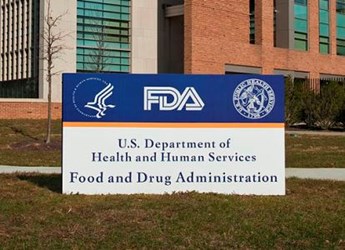The Least Burdensome Provisions: Concept And Principles Guidance Summary And Analysis
By Reva Alperson and Samantha Eakes, Greenleaf Health, Inc.

Congress first directed the Food and Drug Administration (FDA) to take a least burdensome approach to the premarket evaluation of medical devices through the Food and Drug Administration Modernization Act of 1997 (FDAMA). Congress’ intent for the least burdensome approach was to eliminate “unnecessary burdens that may delay the marketing of beneficial new products, while maintaining the statutory requirements for clearance and approval.”
The FDA’s most recent document implementing this policy is the final guidance The Least Burdensome Provisions: Concept and Principles, published Feb. 5, 2019.[i] This updated guidance “is intended to accurately reflect Congress’ intent by describing the guiding principles and recommended approach for FDA staff and industry to facilitate consistent application of least burdensome principles.” Implementing these principles will help to streamline FDA’s regulatory processes, reduce unnecessary burdens and, ultimately, allow for earlier patient access to medical devices.
Only a few significant changes exist between this updated guidance and its 2002 predecessor The Least Burdensome Provisions of the FDA Modernization Act of 1997: Concept and Principles; however, medical device manufacturers should note the FDA’s renewed attention on expediting regulatory approval processes. Since publication of the 2002 guidance, the Food and Drug Administration Safety and Innovation Act (FDASIA) and the 21st Century Cures Act have provided additional clarity on the least burdensome provisions, and further recognized the role of postmarket activities in relation to premarket decisions. The additional clarity provided on both topics is incorporated in the updated guidance.
The FDA also stresses in this guidance that the least burdensome provisions should be applied throughout the lifecycle of all products meeting the statutory definition of a device (including device constituent parts of combination products), and to all regulatory activities both premarket and postmarket.[ii]
Guidance Summary
First, the FDA introduces the theoretical groundwork for the practical recommendations set forth later in the guidance. The FDA defines “least burdensome” as “the minimum amount of information necessary to adequately address a relevant regulatory question or issue through the most efficient manner at the right time.” Adherence to “least burdensome” principles does not change the statutory or regulatory standards; it simply addresses the kind of information needed to meet these standards, its source, and how it should be presented to the FDA.
Additionally, the FDA identifies seven “guiding principles” that should be applied when taking a least burdensome approach. These principles focus on the efficiency of the review of premarket submissions and regulatory questions using a product-tailored approach and international harmonization of standards and regulatory authorities. The seven principles, as stated in the guidance, are:
- FDA intends to request the minimum information necessary to adequately address the regulatory question or issue at hand.
- Industry should submit material, including premarket submissions, to FDA that are least burdensome for FDA to review.
- FDA intends to use the most efficient means to resolve regulatory questions and issues.
- The right information should be provided at the right time (e.g., just-in-time data collection) to address the right questions.
- Regulatory approaches should be designed to fit the technology, taking into account its unique innovation cycles, evidence generation needs, and timely patient access.
- FDA intends to leverage data from other countries and decisions by, or on behalf of, other national medical device regulatory authorities to the extent appropriate and feasible.
- FDA intends to apply least burdensome principles in international medical device convergence and harmonization efforts.
To execute these principles, the FDA emphasizes the need for excellent customer service and clear communication on its part, and requires from industry clear and concise requests, premarket submissions, and responses.
The guidance goes on to list the various ways in which the FDA and industry can apply the least burdensome principles by requiring “the minimum information necessary” submitted through “the most efficient means” and at “the right time.” The FDA provides examples of how to implement each element of the least burdensome definition.
Regarding “the minimum information necessary,” the FDA provides examples, including the use of less burdensome sources of clinical data, the use of nonclinical data, and the acceptance of alternative approaches.
A highlight of this section is the FDA’s note that “alternative sources of data may include peer-reviewed literature, outside the U.S. (OUS) data, real-world evidence (RWE) and well-documented case histories.” Within the discussion of real-world evidence, the FDA provides several examples of products approved using RWE, such as the approval of “a PMA for a permanent pacemaker electrode using clinical data captured through a remote monitoring system in a prospective registry.”[iii]
The section on “the most efficient means” discusses reducing the burden of traditional clinical studies, using benefit-risk assessments, streamlining processes and reducing administrative burden, implementing smart regulation, and working to advance international harmonization.
The FDA highlights the potential use of historical control groups, non-comparative clinical outcome studies, adaptive study designs, and using a subject as its own control as methods to help minimize the number of enrolled patients in a study. The FDA also references various actions it is taking to engage in global harmonization efforts such as participating in the International Medical Device Regulators Forum (IMDRF) and the Medical Device Single Audit Program (MDSAP).
Lastly, examples related to “the right time” include balancing premarket and postmarket information needs, and just-in-time testing. The FDA here emphasizes its focus on the total product lifecycle and describes its “recent review of 200 product codes of devices subject to the PMA review process to assess whether these devices were candidates for a premarket/postmarket shift of data capture or reclassification.”
The FDA notes its intent to strike the right balance between premarket and postmarket information needs and states that “this balance is intended to address obtaining the minimum necessary information at the right time in the total product lifecycle.”
The FDA also outlines the various compliance policies that can be utilized to support the goals of the least burdensome approach. The Agency explains that it will exercise enforcement discretion when it comes to examining whether certain products comply with statutory requirements. Examples of these kinds of products include mobile medical applications and general wellness products.
Additionally, the FDA explains that, in some situations, “when there are no alternative devices, or the risk associated with changing to an alternative is greater than the risk associated with the violative devices, [the] FDA can determine the violative devices to be medically necessary.” As an example, the “FDA may exercise discretion by not taking enforcement action against a violative device in order to address patient and clinician need.”
Changes From 2017 Guidance
The draft of this guidance document was published in December 2017. Many of the provisions described in this updated final guidance also appeared in the 2017 draft guidance; however, there are several new provisions manufacturers should note.
The new “just-in-time testing” section indicates that early feasibility studies, including certain first-in-human studies, are acceptable means of promoting the right time principle for IDE applications in device evaluation. These studies may be based on less nonclinical data than is typically required for traditional feasibility studies. Through these new allowances, the FDA aims to promote earlier initiation of clinical studies in the device development process in order to speed up the approval process, making medical device products available to patients sooner.
The updated guidance also includes a revised section describing the FDA’s development and recognition of voluntary consensus standards, which support global harmonization. Adopting such standards creates “consistent approaches to medical device development, manufacturing, and evaluation” across multiple regulatory bodies. In developing these voluntary consensus standards, the FDA intends to incorporate the least burdensome approach. This is an expanded approach, as the draft guidance only references the adoption of these standards for device evaluation. FDA also highlights its commitment to this action by providing additional details under the seventh guiding principle.
Another major addition to the updated final guidance allows device manufacturers to request feedback from the FDA for proposed actions to respond to inspection observations that “involve a public health priority, implicate systemic or major actions, or relate to emerging safety issues.” To such a feedback request, the FDA will provide nonbinding recommendations to mitigate inspection observations. These interactions between the FDA and sponsors, “can reflect the least burdensome principles when the firm only provides information relevant to the observations and such information is organized to facilitate agency review.”
Conclusion
While the new version of The Least Burdensome Provisions guidance does not institute sweeping reforms, it does offer new methods for medical device manufacturers to expedite the premarket review process for product approvals, as well as clarifies how both the FDA and industry can implement the least burdensome principles in practice. It also demonstrates the FDA’s commitment to working with industry to get new products on the market to improve public health.
 About The Authors
About The Authors
Reva Alperson is Manager of Regulatory Affairs at Greenleaf Health. She specializes in researching and analyzing FDA regulatory issues and in assisting clients with strategic communications. She graduated from Vanderbilt University cum laude with a Bachelor of Science in human and organizational development with a concentration in health and human services. You can connect with her on LinkedIn.
 Samantha Eakes is Senior Manager of Regulatory Affairs at Greenleaf Health. She specializes in developing communications and advocacy strategies, conducting research, and providing regulatory insight for clients. She recently received her Master’s in Public Health (MPH) from Boston University. Prior to completing her MPH, Samantha received her Bachelor of Arts in psychology from Boston University where she graduated summa cum laude. You can contact her at sam.eakes@greenleafhealth.com or can connect with her on LinkedIn.
Samantha Eakes is Senior Manager of Regulatory Affairs at Greenleaf Health. She specializes in developing communications and advocacy strategies, conducting research, and providing regulatory insight for clients. She recently received her Master’s in Public Health (MPH) from Boston University. Prior to completing her MPH, Samantha received her Bachelor of Arts in psychology from Boston University where she graduated summa cum laude. You can contact her at sam.eakes@greenleafhealth.com or can connect with her on LinkedIn.
[i] Food and Drug Administration, Guidance for Industry and Food and Drug Administration Staff, “The Least Burdensome Provisions: Concept and Principles,” February 5, 2019. https://www.fda.gov/downloads/MedicalDevices/DeviceRegulationandGuidance/GuidanceDocuments/ucm085999.pdf
[ii] Section 201(h) of the FD&C Act
[iii] Summary of Safety and Effectiveness Data available at: https://www.accessdata.fda.gov/cdrh_docs/pdf12/P120017b.pdf.
